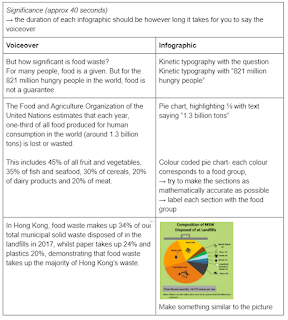Script Planning
Before I developed my script, I looked into the narrative structure and how a documentary should be structured in order to effectively convey the message.
These are some of my notes after looking at the resources provided:
Video
- Act 1, the set-up and contains the inciting incident
- Act 2, the longest act of the film and contains the conflict
- Act 3, the shortest act and contains the suspenseful climax
- Denouement, the ending
Presentation
- The Tease- introduces main characters, establishes a setting, presents a question
- The Body- the main plot, action unfolds, get to know the characters, makes up 80% of the documentary
- The Conclusion- wrapping up, recaps the story and ends it by answering whatever presented in the tease
- Video Technique- establishing shots should provide context, head and shoulder shots for interviews, zoom in to force the viewer to focus on something, shoot the same thing from various angles for additional editing options
- Script Narration- can be 3rd person, self-injected, character narrator or no narration at all, tone of narration should remain the same, avoid descriptive language
- Scripting Technique- uses narrator and character voice
- Editing Technique- pacing of edits affect the tone, A-roll is melody whilst B-roll is harmony, use transitions
Afterwards, I carried out the hexagonal planning task. This involved writing one thing about the topic that I want to include in the documentary onto a hexagon and then linking the hexagons up.

This task allowed me to brainstorm ideas for the key content I wanted in the documentary. From this, I used these ideas and compiled the documentary story structure. This is my group's draft story structure:
For my final script, I extended the draft story structure into a table with 5 different columns: time, narrative, shots, sound, editing. For each column, I described what I wanted in detail in terms of the camera work, sound and editing.
Here are some screenshots:





